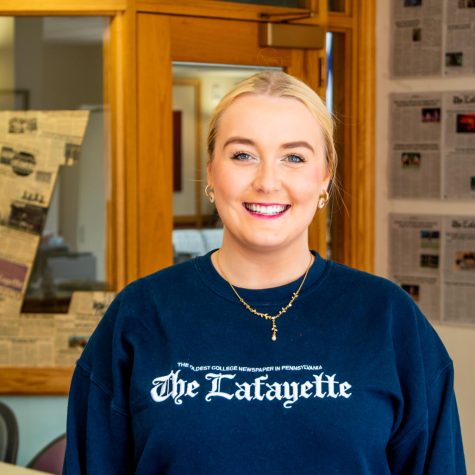As college students across the country and around the world substitute classrooms for their bedrooms, those who came back to Lafayette’s campus are facing new restrictions. But up to this point, the college has been able to weather the COVID-19 pandemic without changing course, despite the nearly 700 students living on college hill.
Three weeks into the semester, Dr. Jeffrey Goldstein, the Director of Health Services at Bailey Health Center, reflected with both relief and joy at the efficiency of the initial COVID testing process that all returning students underwent before moving into college-owned property.
Goldstein said that the initial testing went “exceptionally well” and that the five students who tested positive were notified by phone within 24 hours before being promptly moved into isolation housing and later re-tested for the virus. Twenty-one students were asked to quarantine after coming into close proximity with those who had tested positive, or after traveling from a state with a high prevalence of COVID-19.
“I actually was anticipating…that the prevalence of folks checking in would be more like two percent, and I was super happy that it was a lot less than one percent,” Goldstein said.
Goldstein and his team will be orchestrating weekly surveillance testing of at least 10 percent of the student population each week, in accordance with advice he received from leading epidemiologists at the Pennsylvania Department of Health.
A non-random testing system will be used, pulling representative densities from all residence halls, and even extending to commuter students and those living nearby in off-campus housing. One hundred students are to be tested each week, exceeding the Health Department’s 10 percent recommendation.
“I think that there has been buy-in from the entire community, both on the student side and the employee side. I’m getting, in conversations with students, a lot of positive feedback that students are engaged in adhering,” Goldstein said. “There are always outliers, but for the most part I think there is widespread buy-in on the behaviors that will lead to a positive outcome.”
These behaviors include social distancing, avoiding cross-visitation between residence halls, limiting group engagements to less than 10 people and completing a symptom-check health survey every day. A limited number of dining halls are open, grab-and-go meals can be pre-ordered on an app, seating has been adapted or removed, slots to visit the fitness center need to be booked a day in advance, and study spots at Skillman library have been partitioned by sheets of plexiglass.
“We’ve actually planned for sort of a category-5 hurricane, and now we have a smaller tropical storm to manage,” Goldstein said, referring to the Health Center’s scaled back efforts to address COVID on campus as plans changed from an in-person semester to a virtual learning environment.
The Quad has become more central to the on-campus living experience as one of the few places students can comfortably gather to eat together, due largely to the addition of picnic tables and other spill-over seating options.
“It has been so weird, and eerie,” said Gretchen Christophe, a junior from New Jersey who is living in the Fishers this fall.
Christophe has been pleasantly surprised by how well other students have been obeying COVID-related protocols put in place, and has witnessed student-athletes keeping up their training schedule while wearing masks on the field. But she has still identified some causes for concern.
“The school isn’t really tracking people…it’s kind of scary because then you don’t know who’s bringing it back, and a lot of people are scared that we won’t make it until the end of the semester,” Christophe said. “I feel like Lafayette has been doing pretty well, but the fact that they haven’t really been enforcing things that they said that they would…there needs to be some sort of system that holds people accountable.”
Christophe noted that some of the more egregious incidences of student gatherings or visiting local bars have been perpetrated by students who live off-campus, and thus those over whom the school has more limited oversight.
Members of the community have been encouraged to email covid-19@lafayette.edu to report violations of the safety regulations in place.
As students and administrators collaborate to maintain a safe environment on campus, the attitude seems to echo a comment by President Alison Byerly this summer.
“I think there is a shared sense that we feel we’re in a position to better manage an environment in a community than you see in public settings where people aren’t in a community and aren’t regarding each other in that same way,” Byerly said.






















































































































